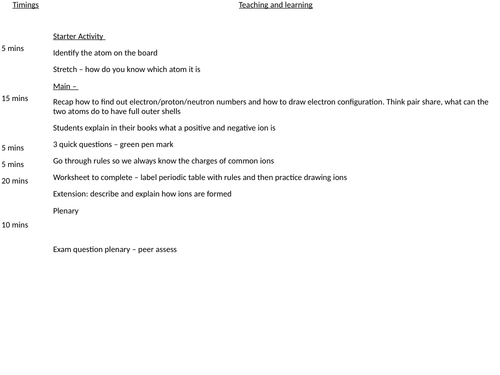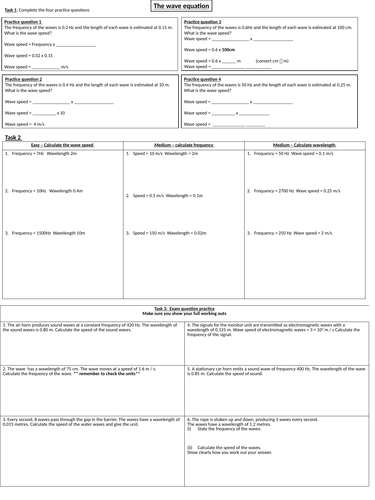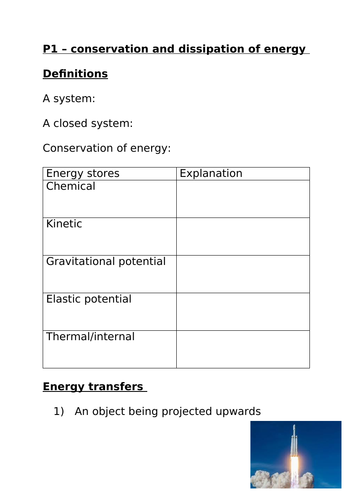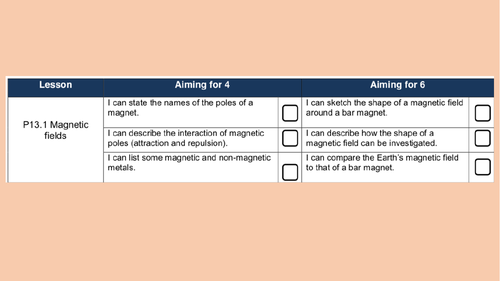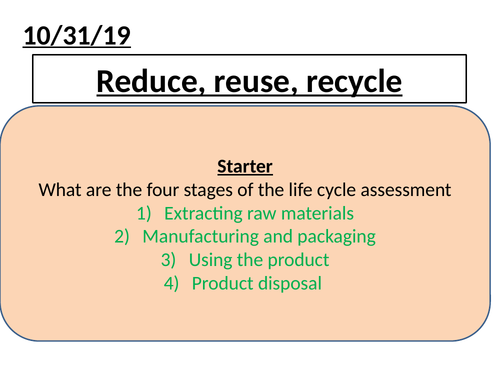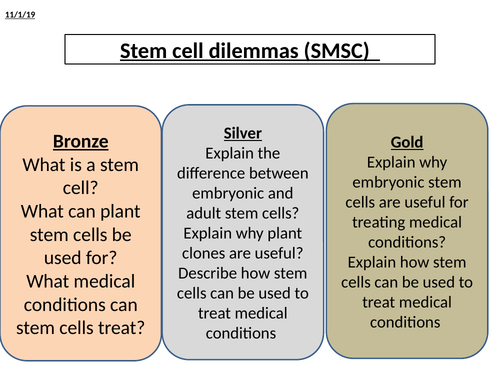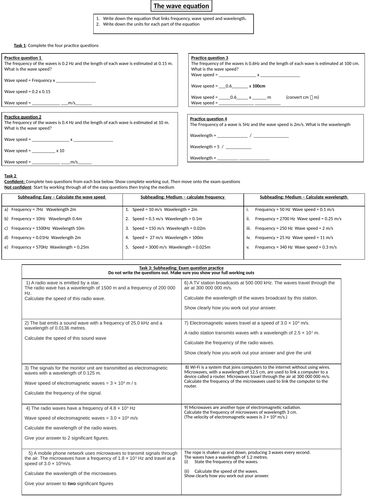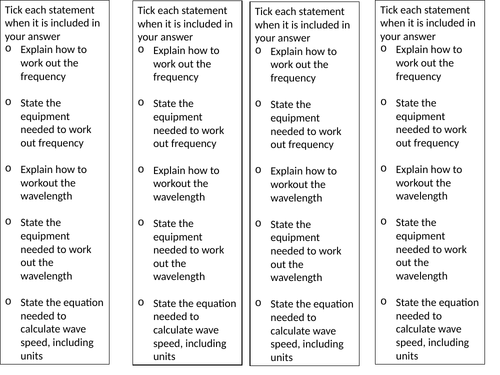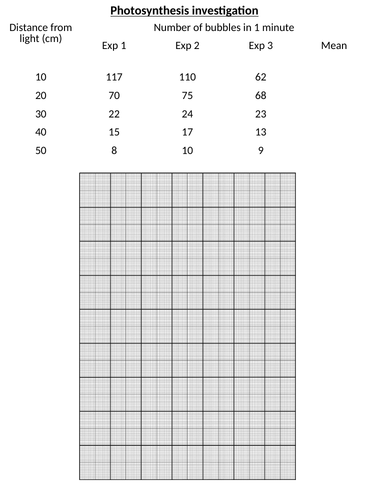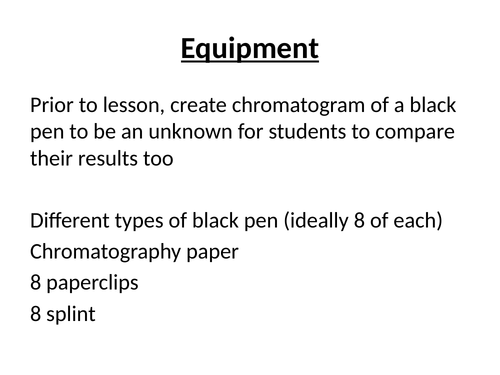
123Uploads
27k+Views
8k+Downloads
All resources

Microscopes KS3
Aimed at a mixed ability year 7 class
5 mins
Differentiated questions to see what students know already about the microscope
Main
History of the microscope task – HA/LA version HA comprehension task about history, LA cut and stick to put in order
Show students parts on real microscope then cut and stick activity to label microscope parts – HA/LA version available as well as support sheets - go through answers
Extension: magnification calculations
Plenary
5 mins
Tweet something you have learnt today

C3.2 atoms into ions - Foundation
aimed at a lower ability class
Starter Activity
Identify the atom on the board
Stretch – how do you know which atom it is
Main –
Recap how to find out electron/proton/neutron numbers and how to draw electron configuration. Think pair share, what can the two atoms do to have full outer shells
Students explain in their books what a positive and negative ion is
3 quick questions – green pen mark
Go through rules so we always know the charges of common ions
Worksheet to complete – label periodic table with rules and then practice drawing ions
Extension: describe and explain how ions are formed
Plenary
Exam question plenary – peer assess

Eukaryotic and Prokaryotic cells
Combining both B1.2 and B1.3 from the kerboodle topic
Starter: No goal starter, images of plant and animal cell and a microscope. students can add any information they already know. Images can be printed or a list of what they know can be wrote. To be referred to at the end of the topic, assess prior knowledge
Main:
Label plant and animal cell, differentiated version available, animated answers embedded in the powerpoint
Match structure and function of organelles
Show students bacterial cell, students draw and label their own, before filling in the comparison tick box to compare animal, plant and bacteria cells. Stretch task available
Explain key words prokaryotic and eukaryotic, then students complete the assessed questions showing understanding of differences between these cells. Self assess answer using mark scheme
Plenary
Plenary grid, can be done individually or as teams. Covers key concepts from the lesson, answers on the following slide

wave equation
Aimed at foundation students
Starter: Retrieval practice questions based on P1
Main: Mini recap of parts of a wave and key definitions.
Both period and wave speed equation demonstrated on powerpoint with examples and practice.
Then move onto the SLOP worksheet with faded practice and exam questions. All answers on the power point
Plenary: Mini white board plenary

Transport in plants KS3
Objectives:
Describe how water is transported in plants
Explain how gases enter and leave plants
explain how some plants are adapted to limit water loss
Potential practical activity of celery with food colouring, not essential for the lesson however.
Starter: Recall questions, answers on the following slide
Main - potential celery practical
discuss the role of the root hair cells, recap students prior knowledge on this
Discuss how water enters a plant, answer questions. Answers on next page
Discuss how gases get in and out of a plant
Discuss adaptations plants have in warm temperatures
Plenary - Exam questions, answers included

P1 conservation and dissipation of energy summary
Summary powerpoint covering the P1 conservation and dissipation of energy topic from the AQA specification. (Kerboodle P1)
Contains a work booklet for students to use and make notes/do tasks/answer questions in whilst teacher runs through powerpoint.
Good for a summary/revision lesson.
All answers are on the powerpoint.

P13.1 Magnetic Fields
P13.1 accordin to AQA Kerboodle
Aimed at a low ability foundation class (targets level 4)
Stater: pictures to guess the title
Main: practical element to find out what poles of magnets do. Then to use iron fillins/compasses to show field lines. can be demoed
Work sheet to consolidate knowledge with an extension on induced/permanent magnets
Plenary: true/false questions based on content from the lesson

C11.3 greenhouse gases
Aimed at foundation students, targets of level 4
Starter: differentiated bronze/silver/gold starter questions with answers
Main:
Draw the greenhouse effect using info from powerpoint. extension question to challenge students
Fact hunt: questions to answer using textbook
Video on deforestation, questions to answer from video
Plenary: animated true/false statements

C11.5 atmospheric pollutants
aimed at foundation level 4 targets
Differentiated bronze/silver/gold starter
Main: recap complete and incomplete combustion, put piece of pot over blue/yellow flame on bunsen burner
Students fill in worksheet, to say what they saw and the difference between incomplete and complete combustion
Students fill in information grid using textbooks, to find the causes of the atmospheric pollutants and the problems with them
Answers for students to check their answers with
Bundle

C11 - The earths atmosphere
All resources aimed at foundation students
C11.1 + C11.2 combined into one lesson
C11.3 greenhouse gases
C11.4 global climate change
C11.5 atmospheric pollutants

Potable water differentiated worksheet
Bronze/silver/gold differentiated worksheets
To show how potable water is made
Aimed at low ability students

C12.6 reduce reuse recycle
Aimed at low ability students, targets of level 4s
Starter: recap on stages of LCA
Main: link up key words to defintions for three R’s
Pictures on board of different items, what are they made of ? can they be recycled?
Discuss three R’s with students
using textbooks students then make an information sheet using the success criteria on the powerpoint
Plenary: 6 mark question about the the three r’s

B2.4 stem cell dilemmas
aimed at a mixed ability class
Starter: differentiated starter questions, with answers on following slide
Main: mini debate to start, 6 statemenets rate from 1-5 on 1 being comfortable 5 being completely against.
Students watch video to hear some viewpoints about the use of stem cells. students then are given one statement so they either need to argue for or against stem cell research using their knowledge from the video and from the information sheets
Whole class debate
Finally summarise the points on the board into two columns, one for stem cell research one against stem cell research
Plenary: exam question

wave equations
Aimed at higher ability students
Starter: retrieval questions based on P1
Main: Mini review of parts of the wave.
Both wave period and wave speed equations shown with examples in the powerpoint.
Differentiated worksheet to consolidate wave equation, starting with faded practice, followed by lots of SLOP, and finally exam questions on the wave equation.
All answers are on the powerpoint
Plenary: Mini white board plenary

waves required practical
Aimed at foundation students
Starter: Retrieval questions based on P1
Main: Videos of the required practicals, followed by a write up. Structure strips to guide write up. Mark scheme on powerpoint.
Exam question plenary

Photosynthesis KS3
Starter: Recap of a plant cell.
Main - intro to photosynthesis, defintion and explaination
Video with questions to answer
Student task to explain photosynthesis with a clear success criteria given
Discuss how we can measure the rate of photosythesis
Pondweed practical could be done at this point, alternatively there is a online simulation attached.
Give students data, work out the mean, plot a graph write an evaluation. Work sheet for support given with results table and graph.
plenary - recap questions from earlier in the topic

P13.2 Magnetic fields of electric currents
P13.2 Following the AQA kerboodle scheme of work
Aimed at a low ability class with targets of level 4
Starter: differentiated bronze/silver/gold starter questions, with answers to green pen
Main: diagram of right hand rule to explain and label. Then a think pair share about different scenarios that could happen.
Sentence starters to help put their think pair share ideas together
Work on a solenoid - reduce task to reduce the information into one sentence
Plenary - differentiated pick the task

Chromatography KS3
Aimed at a mixed ability year 8 class
Starter: summaries what separation techniques students have learnt about so far
Main: Define and explain chromatography
Show students a chromatogram and discuss what we can learn from it
Practical: carry out an investigation to see who wrote the note, work sheet to complete whilst chromatogram is developing
Extension: What effect does each mistake make
Plenary: Exam question

Cells, tissues and organs KS3
Aimed at mixed ability year 7 class, some resources from other areas of tes
Starter: Put key words in size order and discuss
Main: discuss what cells tissues, organs are and examples
Organ systems worksheet to fill in using information around the room
LA version of cut and stick match up the organ, system and function
Extension: research extension questions about the organ systems (sheet provided)
Plenary: tweet something you have learnt today


